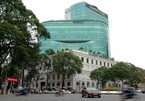 |
| HCM City at night |
Next Dubai?
Ho Chi Minh City (HCMC) joins a growing list of cities from Colombo to Kuala Lumpur that have announced intentions to become international intermediators of capital.
For many of these aspiring financial hubs, Dubai is the model. In the 2000s, Dubai emerged as a global financial center. The impact has been considerable. At the turn of the millennium, the United Arab Emirates had a GDP of $104 billion. By 2018, its economy had not only quadrupled in size but had become less dependent on oil with financial services a major driver of the growth.
Dubai, moreover, achieved this position largely through strength of will. It wasn’t one of the pillars of the world economy like New York or London. It did not benefit from a colonial legacy that bequeathed English law and language skills. Historical happenstance - like Chicago’s dominance of US midwestern agriculture which led to commodity trading or Switzerland’s political neutrality which led to private wealth management - were secondary.
Dubai’s success story, however, is hard to repeat. First, it had some geographic advantages, such as being the hub of a global airline and having neighbors with oil savings ready for investment.
Second, it did not have any obvious regional peers for financial services and was able to fill a vacuum that scarcely still exists given the subsequent proliferation of aspiring financial centers.
Third, its political will was exceptional and extended to amending the Emirati Constitution in 2004 to provide the legal framework that a global financial center would require.
Finally, it was willing to spend. The United Arab Emirates invested in regulatory changes, expatriate salaries, physical infrastructure, and tax incentives. Many countries have more basic needs to fund before considering such largesse.
Key characteristics
The better approach for most countries, including Vietnam, is to first focus on becoming a national financial center. Vietnam has huge investment needs. For infrastructure alone, the annual investment demand is estimated at $18 billion to $20 billion. If HCMC can become an increasingly effective intermediator - raising capital efficiently not only from domestic but international sources - it will not only drive the development of Vietnam’s real economy but also develop the skills and experience necessary to move from a national financial center to an international one.
A national and later global financial center will require investments in physical infrastructure as well as education and training, but policy reforms are the sine qua non. Indeed, global financial centers across the world share some common characteristics.
Firstly, comprehensive legal frameworks. International investors need clear laws that are predictably enforced. Vietnam currently has several important laws that need to be strengthened or introduced including the Law on Securities, the Law on Credit Institutions, and a law on public-private partnerships to attract more investment into domestic securities, banking, and infrastructure.
The second one is solid market infrastructure. Investors are drawn to markets where they can complete trades efficiently and cost-effectively. Vietnam is lagging in several key areas. Real time gross settlement and delivery-versus-payment are under development.
The netting regime does not meet international standards and forces foreign banks to hold extra capital against exposures in Vietnam. Also, Vietnam does not have a market-determined, short-term benchmark interest rate, which is a cornerstone for so many other components of a modern capital market.
Another essential characteristic is monetary policy independence. Investors want predictability. The implication is that monetary policy decisions must be made with a certain degree of independence. This includes foreign exchange rate flexibility, interbank interest rate stability, and inflation targeting.
Fourthly, robust regimes for anti-money laundering and combating the financing of terrorism are needed. Vietnam has committed itself to implementing the Financial Action Task Force’s recommendations on anti-money laundering and combating the financing of terrorism. These are critical to ensure that foreign banks and investors can transact safely in the domestic market.
Vietnam’s growth trajectory only amplifies HCMC’s opportunity. By 2050, Vietnam is projected to be among the 20 largest economies in the world. If HCMC in coordination with the central government can implement these key financial reforms, it has the potential to follow the model of Tokyo, Shanghai, Mumbai, and others which came to global financial prominence by first funding the development of their own domestic economies. VOV

ADB expert identifies ways to make HCMC a financial hub
An expert at the Asian Development Bank (ADB) has recommended several ways to help transform HCMC into a financial center.

Legal capital levels set for foreign financial organisations in Vietnam
The Government recently issued Decree No.86/2019/ND-CP regulating the minimum legal capital levels of foreign banks’ branches and credit institutions operating in Vietnam.
 With key financial reforms, Ho Chi Minh City has the potential to follow the model of Tokyo, Shanghai, Mumbai, and other cities which came to global financial prominence." itemprop="description" />
With key financial reforms, Ho Chi Minh City has the potential to follow the model of Tokyo, Shanghai, Mumbai, and other cities which came to global financial prominence." itemprop="description" />